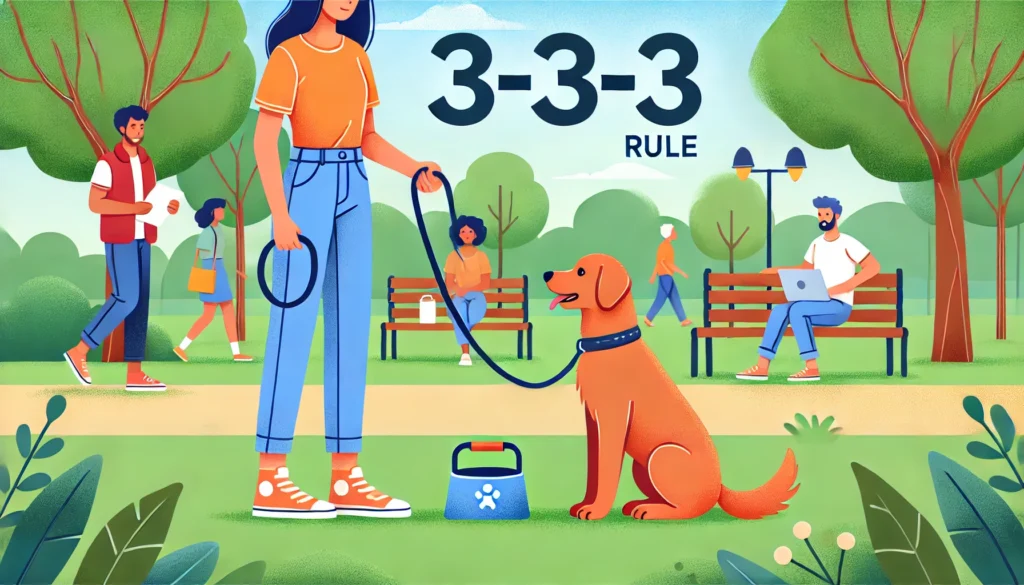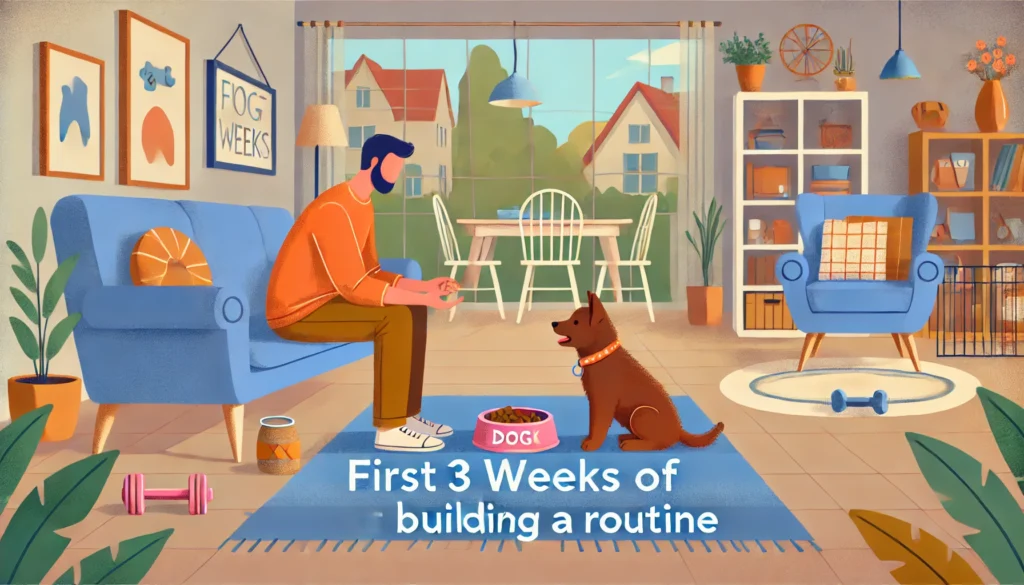What is the 3-3-3 Rule for Dog Training?
Everyone got one Question: What is 3-3-3 Rule for dog training? If you’ve just brought a new dog into your life — especially a rescue dog — you may have heard trainers talk about the 3-3-3 Rule. This guideline helps dog parents understand how long it can take for a dog to feel safe, adjust, and truly thrive in a new home.
Whether you’re in Hernando, MS or Memphis, TN, understanding this rule will make a big difference in building trust and improving training results. Let’s break it down in a simple, actionable way.

The 3-3-3 Rule Explained
The 3-3-3 Rule is a helpful way to set realistic expectations when adopting or rehoming a dog:
| Timeline | What’s Happening with Your Dog | What They Need from You |
| First 3 Days | Overwhelmed, unsure, testing boundaries | Patience, quiet time, gentle guidance |
| First 3 Weeks | Settling in, learning routines, showing personality | Consistent training, positive reinforcement, structure |
| First 3 Months | Fully comfortable, building trust, bonding | Ongoing training, socialization, clear communication |

First 3 Days: The Decompression Period
Think of the dog decompression period as your dog’s orientation. Everything is new — smells, sights, sounds, and people. Many dogs feel nervous, shy, or even a bit withdrawn during this time.
Common Behaviors
- Hiding or avoiding eye contact
- Not eating much (stress can reduce appetite)
- Sleeping a lot or pacing
- Testing boundaries, such as chewing or potty accidents
Pro Tip: Avoid overwhelming your dog with visitors or too many new activities during this time..

First 3 Weeks: Building a Routine
After the initial stress fades, your dog begins to understand your household’s rhythm. This is when their personality starts to shine — and when behavior patterns begin forming.
Focus on Structure
- Set feeding and potty schedules
- Introduce leash walks in safe areas
- Begin short, simple training sessions (sit, stay, recall)
- Establish sleeping arrangements and boundaries
Local Tip for Hernando & Memphis Dog Owners
If you’re in the area, take advantage of quieter walking spots, like Conger Park in Hernando or Shelby Farms Park in Memphis, to build confidence before introducing busier environments.

First 3 Months: Trust and Deep Bonding
By the three-month mark, most dogs feel fully part of the family. This is when training results can really take off.
Training Goals for This Stage
- Increase difficulty in commands (stay longer, more distractions)
- Begin socializing with other dogs in safe, supervised settings
- Work on behavior-specific challenges (jumping, barking, leash pulling)
Local Service Note: At this stage, many dog parents enroll in board-and-train programs for advanced obedience or behavioral training.
Why the 3-3-3 Rule Matters in Dog Training
Many behavior issues occur because owners expect too much, too soon. The 3-3-3 Rule reminds us that dogs need time to adjust before they can truly learn and trust.
Key Takeaways
- Rushing the process often backfires
- Progress isn’t always linear — some dogs take longer
- Patience builds trust, and trust builds better training results
Case Study: Memphis Rescue Dog Success Story
When a 2-year-old Labrador named Max was adopted from a Memphis shelter, his new family followed the 3-3-3 Rule.
- First 3 Days: They kept things calm, introduced him to only one room at a time.
- First 3 Weeks: They established feeding times, took daily walks at Shelby Farms, and began basic commands.
- First 3 Months: Max joined group training classes and became confident around other dogs.
Today, Max is a well-mannered companion thanks to patience, structure, and consistent training.
How to Apply the 3-3-3 Rule at Home
Here’s a practical approach you can use immediately:
- Observe, don’t overwhelm — let your dog explore at their own pace.
- Create a safe space — a crate, bed, or quiet corner works well.
- Stick to routines — same feeding, walking, and sleeping times daily.
- Reward good behavior — praise and treats go a long way.
- Avoid punishment — focus on redirecting unwanted behaviors.
When to Seek Professional Help
If after several weeks your dog still shows extreme fear, aggression, or refuses to eat, it may be time to contact a local trainer.
FAQS
Not always. Some may adjust faster, others need more time depending on their history and personality.
No. It’s useful for any dog in a new home, including puppies and rehomed family pets.
Yes, but keep it short and simple. Focus on trust before complex commands.
Regression is normal. Go back a step, reinforce routines, and keep sessions positive.
